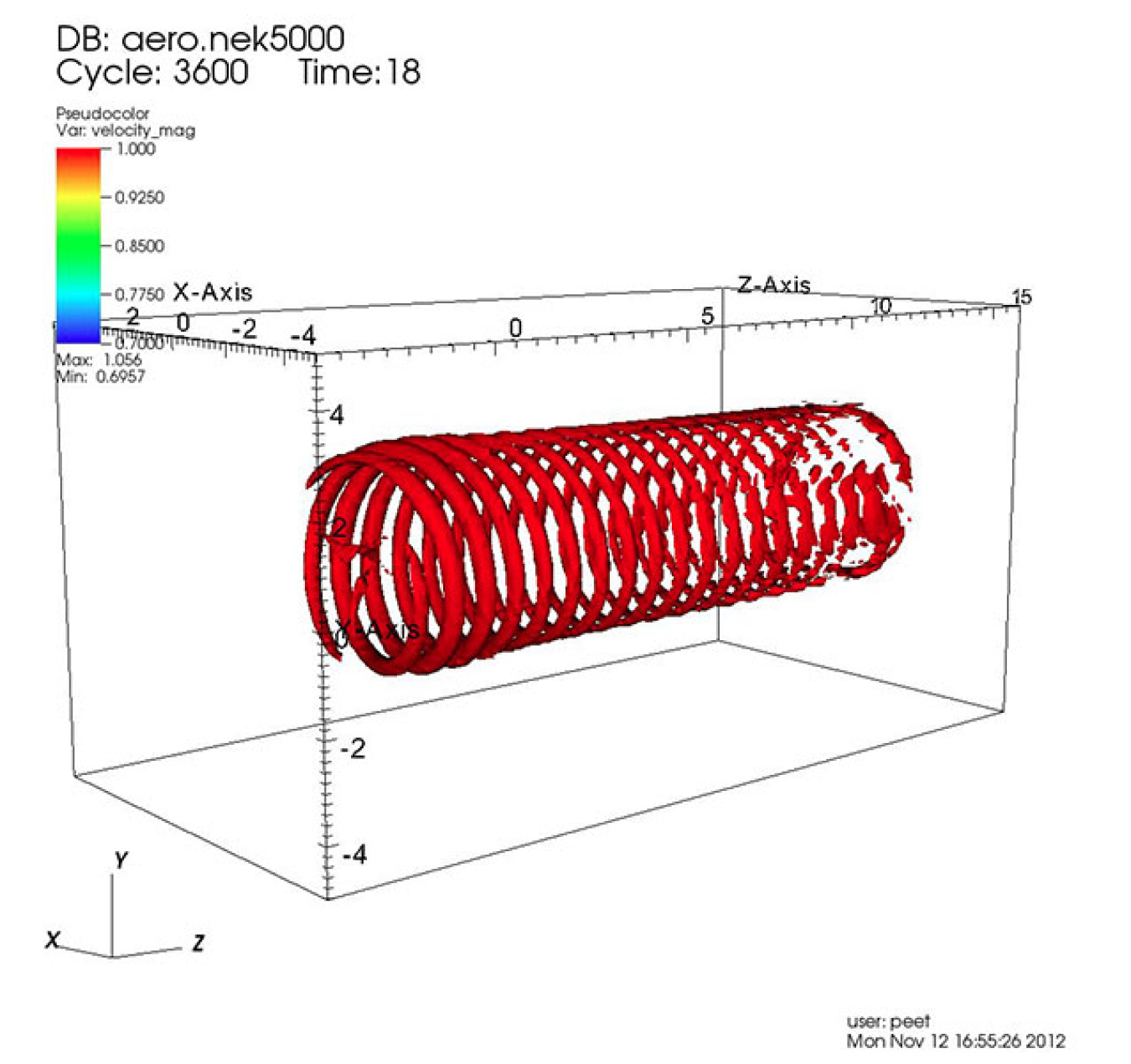Researchers at DOE's Argonne National Laboratory are developing a computational simulation tool to conduct studies of complex flow and wind turbine interactions in large land-based and offshore wind farms that will improve wind plant design and reduce ...
Wind Energy Technologies Office
October 1, 2013
A wake of a wind turbine modeled by the actuator line model in Nek5000
This is an excerpt from the Third Quarter 2013 edition of the Wind Program R&D Newsletter.
Researchers at the U.S. Department of Energy's Argonne National Laboratory (ANL) are developing a computational simulation tool to conduct studies of complex flow and wind turbine interactions in large land-based and offshore wind farms that will improve wind plant design and reduce the levelized cost of energy. Simulations on a wind-plant-scale require accurate simultaneous resolution of multiple flow scales, from mesoscale weather to turbine-blade scale turbulence, which presents special demands on the computational solver efficiency and requires extreme scalability.
Argonne researchers, in collaboration with Arizona State University, are adapting a high-order spectral-element computational solver, Nek5000, to the simulation of wind farms. Nek5000 is an open-source computational fluid dynamics and heat transfer solver developed at ANL. An especially attractive feature of Nek5000 is its extreme scalability. It has consistently sustained more than 70% full-scale efficiency on 200,000-plus computer processes on leading-edge computing platforms, and it recently crossed the threshold of 1 million processes on the newest ANL supercomputer Mira BG/Q. Nek5000 is one of a few codes that can actually take advantage of petascale resources and solve very large problems involving many different scales of motion. High-order methods provide extremely high accuracy and minimal numerical errors, which allows Nek5000 to realize, by an order of magnitude, better utilization of high-end computing resources compared to standard lower-order codes to achieve an accurate solution.
In collaboration with the National Wind Technology Center at the National Renewable Energy Laboratory, the Argonne/Arizona State team is implementing state-of-the-art computational models for wind plant aerodynamics and wake modeling in Nek5000. One example includes actuator line aerodynamics models. The actuator line aerodynamics approach models rotating turbine blades by adding extra terms to the equations of motion rather than resolving them with a corresponding numerical grid, which would require an excessive amount of grid points per wind turbine. The actuator line aerodynamics approach is thus more computationally efficient and can be applied to the situations when more than one wind turbine is included; it is currently the most viable method for simulating large wind farms at full scale. Argonne is also developing a large-eddy simulation atmospheric boundary layer solver within Nek5000 to model realistic incoming wind conditions, and a fluid-structure interaction solver to account for blade structural dynamics, which helps to accurately predict mechanical loads on the blades.

